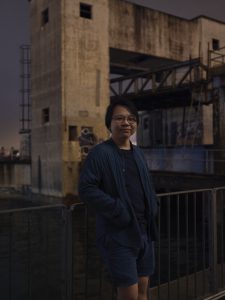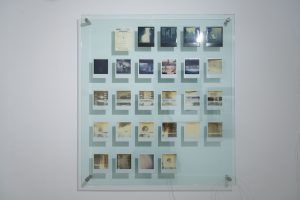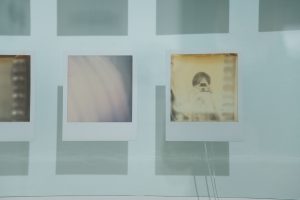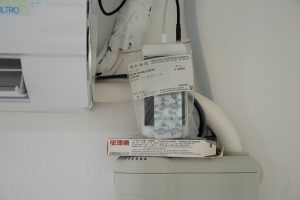artist support programme (ASP) alumni: Jacklam Ho Tsz-yeung
「藝術家支援計劃」獲選藝術家:何子洋
閱讀完整訪談 (中文) >>>
–
Jacklam Ho Tsz-yeung (b.1990) is a sound artist, sound designer, and mixing engineer. He graduated from Hong Kong Academy of Performing Arts in 2012, majoring in sound design. He uses sound creation in different roles, as seen in theatre sound design, independent film music and sound mixing, animation sound effects, music arrangement, etc.
In terms of his personal work, he explores the relationship and interaction between sound, and space based on sound, uses different sound sources to create unique soundscapes in the space, and gives unique listening experiences in the work.
Jacklam Ho Tsz-yeung was supported by soundpocket’s Artist Support Programme 2012–13.
Personal website >>>
–
Interview excerpt:
8.6.2021 (Tue) | 5:30pm
Fu Lee Loy Shopping Centre, Hong Kong
◎ “daydreaming”, a work shown in ‘10 Years of ASP’
soundpocket: Tell us more about your work “daydreaming” in ‘10 Years of ASP’.
Jacklam: I have wanted to create this work for a very long time. The polaroids were always on my table so I was constantly reminded that I should work on this. However, there never seemed to be the best time and place to work on the piece until I was told about the ‘10 Years of ASP’ exhibition. This was exactly the right moment for me to work on “daydreaming” because it was the fifth year of my observation period following my cancer diagnosis – there is some thinking that if a cancer patient does not have a relapse within five years, the condition will be much more stable. Though it was about three months before reaching the five-year period, I think the time had come to create this work.
soundpocket: How did you present the artwork? This was the first time that you used photographs in your work, and you included sounds too. Can you please share your ideas on this?
Jacklam: I think this is rather specific to me. When I started thinking about how I should showcase the polaroids, I thought it would be a great idea to show every single photo that I took. In terms of the way to present the work, this was what I spent most of my time pondering. This was indeed the first time I showed photos in my work, and there was a lot more to handle than I thought – from how to frame the photos, how to tell the story, and the position of each polaroid.
The reason why I used an acrylic block for framing the polaroids was that I wanted to imitate the display boards that are commonly seen in hospitals. It was to create this kind of atmosphere, like in the hospital. I do not show any images from the hospital itself, but you can connect them with things that are related to the hospital. I stayed in the hospital for almost two weeks when I was undergoing surgery; I could barely walk, or if I could, the farthest I could reach was into the corridor. That was where I could see these glass frames, with their posters, and thank-you cards for the doctors and nurses. These glass frames left a remarkable impression on me during my stay in the hospital, and this is the reason why I combined the two [the transparent block and the polaroids].
You might wonder why I did not go for a regular wooden frame for the polaroids. The wooden frame could definitely show off my polaroids, but it could not connect with my experience in the hospital. This is why I decided to present the polaroids in this way.
Also, I used a resonance speaker in this work because I have been exploring the potential of speakers in various mediums. When I was studying, I was required to present the “best” quality of sound. The sounds had to be “real” and “sweet” or reach a certain professional level. After I learned about resonance speakers, it triggered me to conduct experiments with them. They did not have to have “perfect” sound quality, nor the “most accurate” pitch. After the speaker comes into contact with different materials, the reflected sound is also so different. This is also the reason why I did not use ordinary speakers here. About the sound source, it was a song that I would listen to when I went for Radiotherapy. I do not want to play the whole track directly, so I tried to edit it, to make it vague [unrecognizable], and at the same time, I tried to make the whole track retrospective, as if dating back some moments. I also edited the track to create the vibe that I would like to present in the exhibition.
soundpocket: So you edited the track to make the sound vague (or unrecognizable) in this work. What about the polaroids, the experience, or the memory – did you try to make them vague?
Jacklam: I can never present the memory as it is. In “daydreaming”, the polaroids cannot directly show the process of me going to the hospital, or my feelings about this journey. It is more about presenting my status during that period of time, which was already something very vague.
soundpocket: You have mentioned about making a photography book about this. Are you working on it? What is your plan?
Jacklam: I still want to produce this. Because I am afraid that the colours of the polaroids will fade, I will save a digital scan of all of them. For the photography book itself, I do not have the urge to make it right at this moment. As the polaroids have already been shown in the exhibition, I will for sure take a series of photos for the sake of documentation first. Next, I will consider the publication of the book. I will have to write about the journey, but I am not ready yet; at the same time, my memory of it is also fading, so it might be a bit “inaccurate”. I am not very sure about this.



